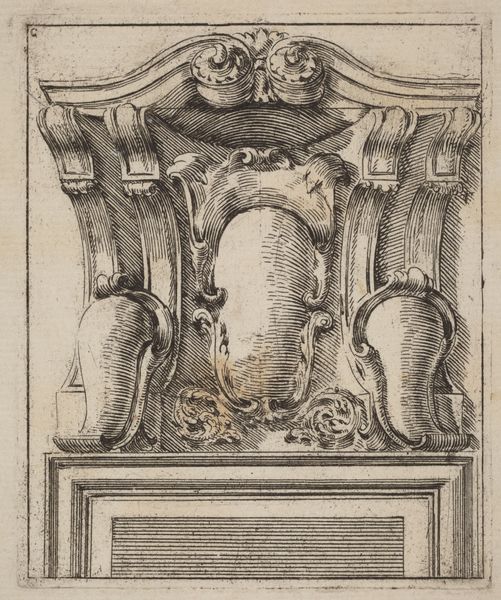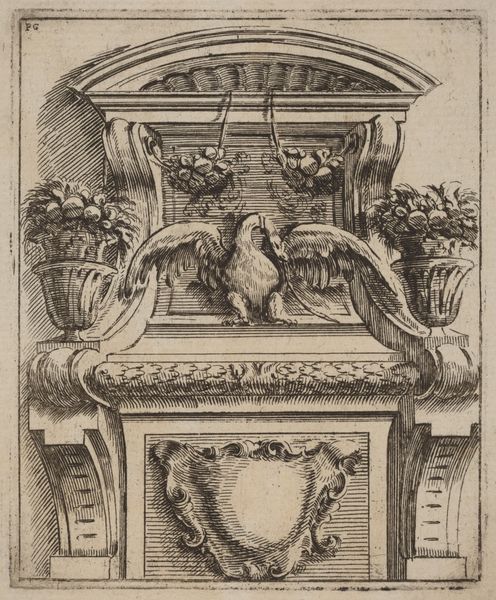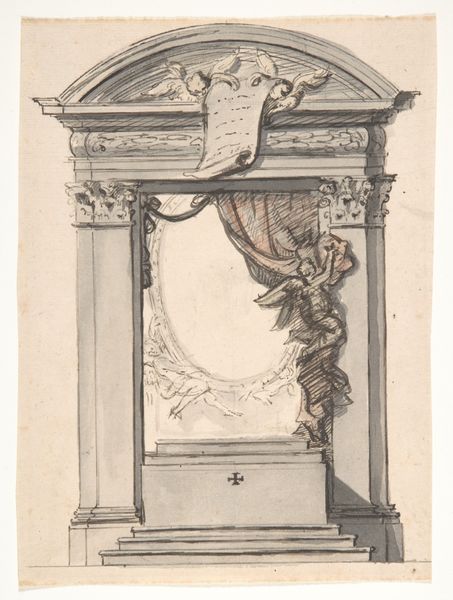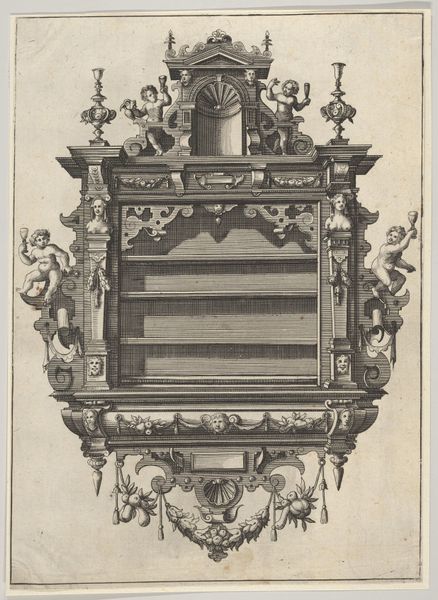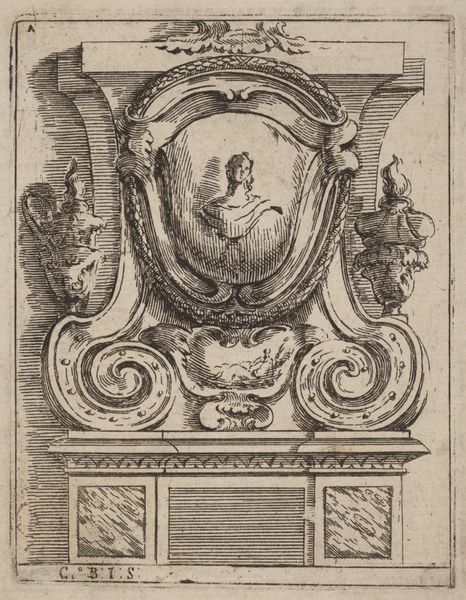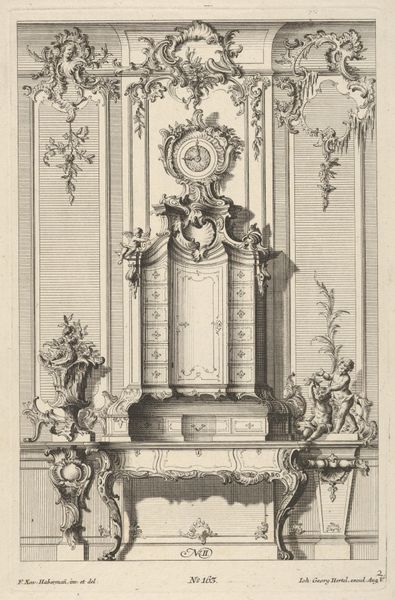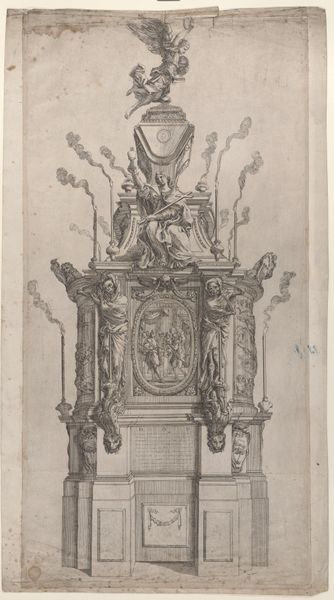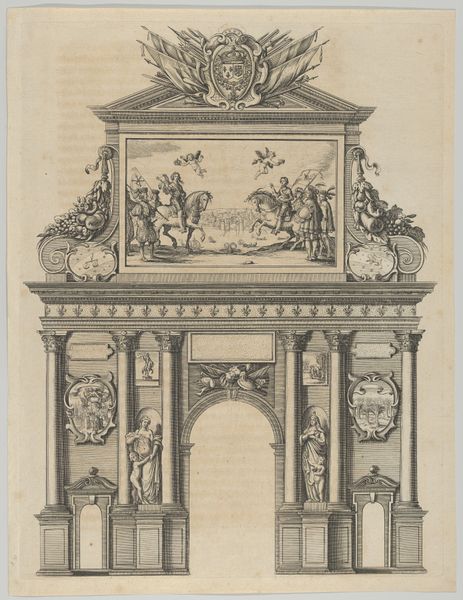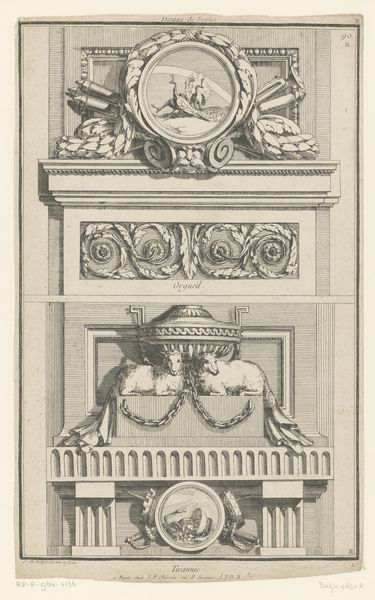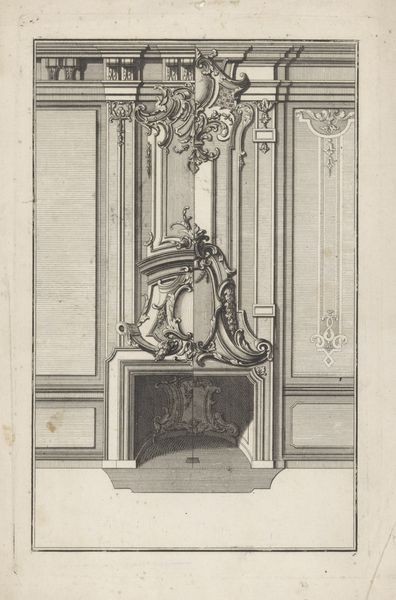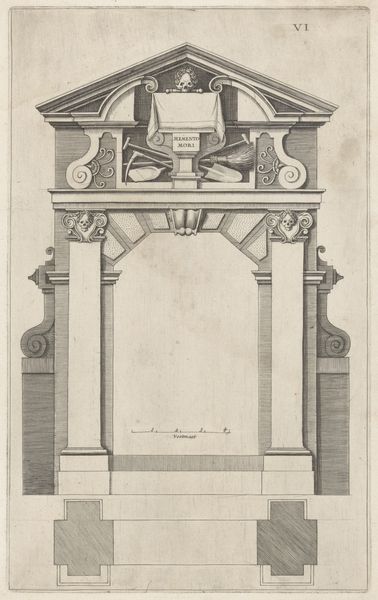
print, engraving, architecture
#
allegory
#
baroque
# print
#
form
#
geometric
#
line
#
history-painting
#
engraving
#
architecture
Dimensions: plate: 11.1 x 9 cm (4 3/8 x 3 9/16 in.) sheet: 17.2 x 12.4 cm (6 3/4 x 4 7/8 in.)
Copyright: National Gallery of Art: CC0 1.0
Editor: This print, "Architectural Motif with a Figure" by Carlo Antonio Buffagnotti, dates back to about 1690. The engraving work creates a kind of austere monument. What sort of stories do you see in this carefully constructed architecture? Curator: The monument itself speaks. Notice the layering, how Buffagnotti uses geometric shapes to give form, substance, and meaning, reminiscent of Baroque allegory. Can you see how each level conveys information through symbols and composition? Editor: I notice the repeated use of rectangles, arches and geometric shapes overall, especially on top with that triangular pediment and again at the base. What does all of that repetition suggest? Curator: Consider the geometric symbols in a psychological sense. What emotional impact might the repeated geometric forms produce on a viewer over time? Are these architectural forms culturally significant or charged, do you think? Editor: Maybe, I can see how repeated forms create a sense of order and permanence. Perhaps these regular forms reflected ideals during the Baroque era, but I wonder about that central figure...it's almost lost in the ornament. Curator: Ah, excellent point. Consider the cultural memory encoded within this "figure." This juxtaposition is central: The relationship between human, geometric and allegorical representation provides access to history. It is a symbolic structure, reflecting specific cultural values, through easily recognized forms. Editor: It's amazing how much cultural information can be packed into a relatively simple image through symbolic forms and imagery! Curator: Indeed! Images serve as carriers of cultural memory and convey emotion far beyond the sum of their parts, shaping and reflecting history.
Comments
No comments
Be the first to comment and join the conversation on the ultimate creative platform.
